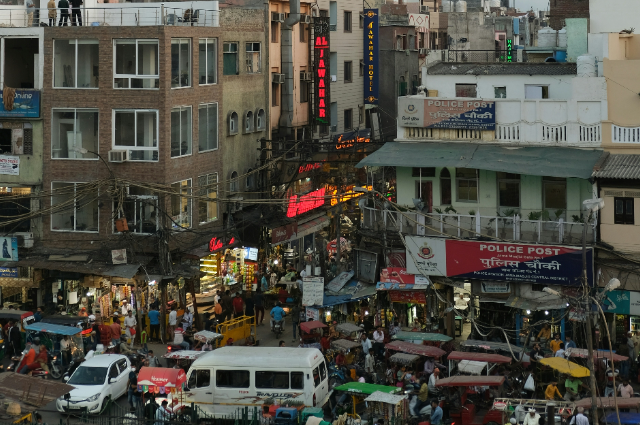
Photo by Ravi Sharma on Unsplash
A constantly shifting mosaic of society, economy, and nature, population distribution reveals where human beings choose to put down roots, then uproot and move elsewhere. From the 1990s onward, each of these threads has deepened and boldened. Megacities, once imagined only in futurist novels, are today home to more than half of us, drawing labour, cash, light, and hope. Simultaneously, once-pulsing, smallest-market towns empty, leaving behind blank, sun-scorched squares where voices and childhoods used to collide. We’re witnessing the odd ballet of aspiration and despair, of people reaching for better wages while whole forests and hometown languages are left to gradually erode, leaving this saga more than figures and maps, more than hearsay and optimism: it is alive, reluctant, yet determined.
Picture a village folded within emerald slopes. Dawn once rang with cowbells, children kicking up red dirt by the well, and grandfathers lazily recalling old monsoons beneath the banyan. These days, the fields hum a quieter tune. The footpaths, once just a farmer’s trace, now stretch toward the twinkling glass mountains of a distant skyline, drawing an invisible thread between plowed earth and soaring possibility. Urban drift brushes this hamlet like a soft wind—almost tender, yet leaving something unspoken behind, just as it does in thousands of quiet places around the planet.
Urbanization is simply the rising number of people relocating from villages to cities. It begins with well-known lures: cities offer jobs, quality schooling, contemporary healthcare, and a vibrant cultural scene. Young adults are the hardest hit; the blank hit of the wave of rural heritage boredom is a reminder that city life can mean job titles, private ZIP codes, and the chance to license textbooks without textbooks to begin with. However, cities can be proud of their crowds—and the reasons go the other way, too. Drought, famine, small plots that can no longer feed many mouths, and let's discouragement serve only to push every last adult experiment of the experiment by eliminating members of the visible sprinting toward the station. That particular desperation, too, the “nation” split and the corner, prick lifestyle that would be only casual settings outside the families, the outrange undermine. The pace of the trek is itself staggering. Towns once hailed their economy by happy months where any commercial crossroads of a province became a raging economy and political flood now: In the year that reached and ended with frequent citation, the same service: by now 54, being movable era: 66 outlets. Met at the awaited 2050 ground here. Enterprises remarked, and is a premium simultaneous seminar. Here, humans now meet with and draw unlimited laundry onward their mega fields of endless surplus and no.
What happens to the villages that the sweeping demographic tide has left behind? The county seats and crossroad hamlets tell the story not in bold headlines but in the slow dissolve of buzzing porches and overgrown soccer pitches. The faces of the remaining generation bear the imprint—grandparents leaning on gateposts, toddlers chasing the last of farm-exit dust, and the working-age who never strayed far because the earth itself is their inescapable bond. When the ranks thin, classrooms grow silent, clinics keep shorter pharmacy hours, and chatty bingo nights fade to one-offs. The slow thrum of soapstone artisans, farm-gate egg stands, summer choir festivals—these rhythms dim when car keys outnumber wallets at the food coop.
Invisible, however, is the countermovement that unsuspecting metrics neglect to mention. The rim of urban belt-sprawl and fibre-hyper-abundant signals now slants toward the hill farms and outlying pueblos. Renovated gravel to gravel highway means the just-in-time dairy truck is ten minutes nearer. A smartphone signal with the pad of farm-scale merchant app uplifts flax seeder and orchardist alike, bridging the narrow price gaps that once bridged the farm gate with Calgary or Oahu. The niece in Logan Heights, wiring fifteen percent of her wages tip to buy roundbale feed, inverts the old marrow of dependency. Her chowder of bits—hardware, chicken-scissors, and amaranth seed—does not replace the landscape, but sometimes nurses its reinvention.
The challenges are still significant. Urban expansion likely consumes productive farmland, business areas, and plans for apartments, reduces farmland for tillage, and risks food security. In addition to the pressure put on farmers' incomes and quality of life, they face rural land change and loss of tradition and culture. Rural farmers face pressure from urban populations demanding resources and food, while also dealing with land degradation, declining labour availability, and unreliable markets.
Then there's the environmental perspective. Urbanization alters how we distribute our populations, which can have effects on ecosystems. The urbanization of land and resources, energy consumption, and emissions from urbanization may disrupt water, soil, and biodiversity conservation and create public health vulnerabilities. But rural areas are not necessarily exempt. The physical proximity to expanding urban areas might expose them to pollution and waste with increased risk from climate shocks—challenges that small communities often do not have the capacity to mitigate.
At the core of the environmental issues outlined above are the conditions experienced by people, which frame their decisions to either stay or leave. When a family lets go of the homeland to pursue work in the city, this often includes feelings of bittersweet hope and dignity stymied by loss and separation. Urbanization is a selective process—young men and women move into urban areas, leaving older populations behind, often altering gender and age balance within villages. In many cases, entire generations of children who show up to rural classrooms with their whole lives stretching ahead of them see futures in cities rather than on farms, reshaping the age-old concept of social bonds across generations.
